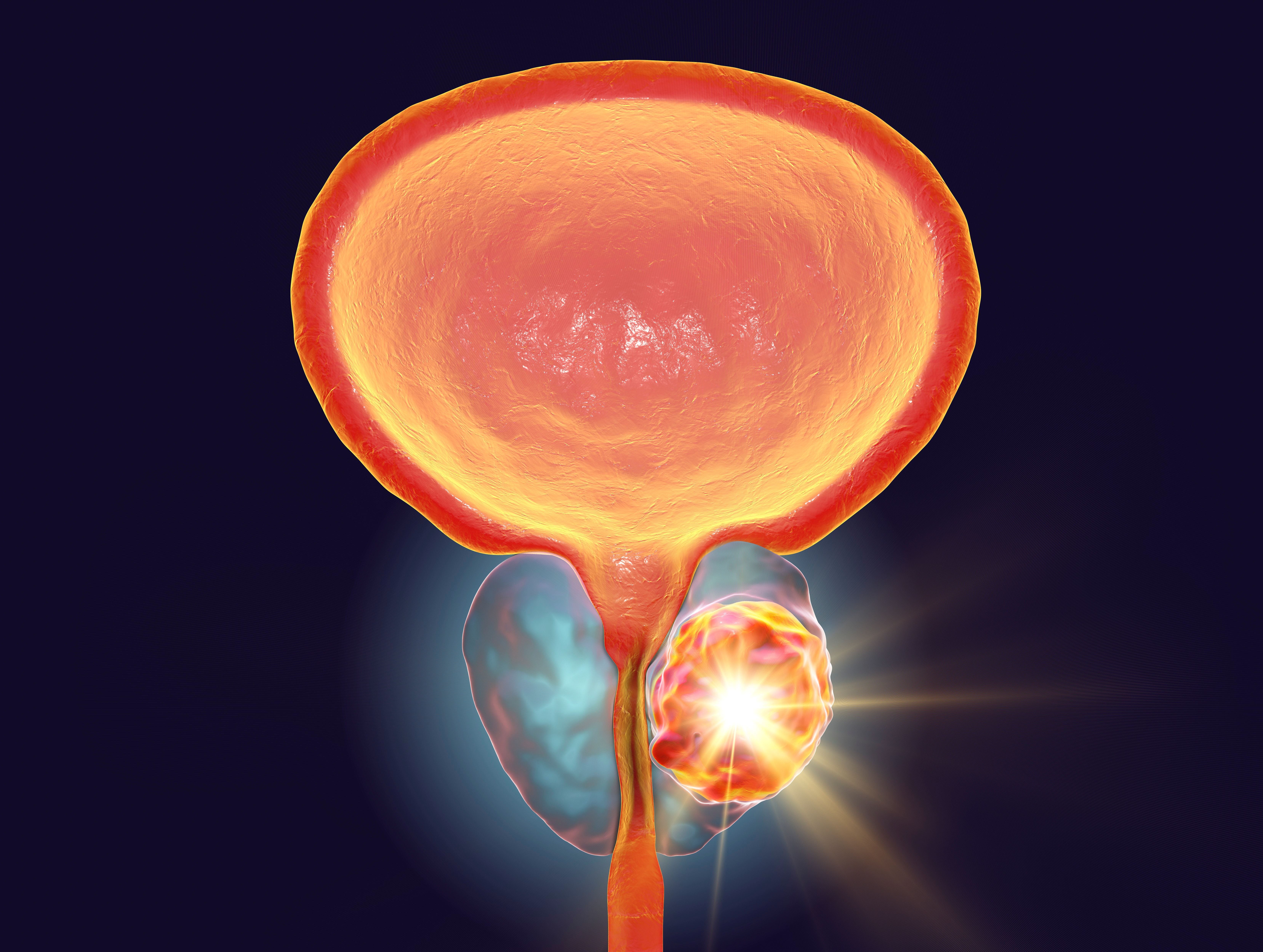Darolutamide Becomes Routine Doublet and Triplet Option in Hormone-Sensitive Prostate Cancer
Darolutamide has been adopted routinely in clinical practice as a component of both doublet and triplet regimens for the treatment of patients with metastatic hormone-sensitive prostate cancer.
3D illustration showing destruction of a tumor inside prostate gland: © Dr_Microbe - stock.adobe.com

The use of darolutamide (Nubeqa) is now a routine option in clinical practice as part of both doublet and triplet regimens for the treatment of patients with metastatic hormone-sensitive prostate cancer (mHSPC). This combination choice is supported by patient characteristics, according to findings from a retrospective real-world analysis presented during the 2024 American Urological Association Annual Meeting.
Among 319 eligible patients with mHSPC, 60% (n = 192) received doublet therapy with darolutamide plus androgen deprivation therapy (ADT) and 40% (n = 127) received triplet therapy with darolutamide in combination with docetaxel and ADT. The median times from prostate cancer diagnosis was 73 weeks (95% CI, 50-137) and 14 weeks (95% CI, 11-16), respectively, the rates of patients with a Gleason score of 8 or higher were 42% and 52%, respectively, and the mean prostate-specific antigen (PSA) levels at index date were 42.3 ng/mL (range, 0-2061) and 92.0 ng/mL (range, 0-3040), respectively. Most patients in both groups had Medicare coverage (77% vs 53%).
“Darolutamide in combination with docetaxel and ADT is FDA approved and an NCCN Guidelines Category 1 preferred treatment for mHSPC,” Joelle Hamilton, MD, oncologist at Urology Centers of Alabama, and coauthors wrote in the poster. “There are limited data on real-world utilization and treatment patterns of darolutamide plus ADT for mHSPC.”
To conduct their analysis, investigators used the PPS Analytics Patient Population Health Management Platform, the largest urology integrated database in the United States, to collect data from 40 community urology practices. Findings included structured data in electronic medical records, as well as chart abstraction data in clinical notes. Patients were treated with the double or triplet therapies between January 1, 2019 and March 31, 2023.
The objective of the retrospective analysis was to describe the clinical profile of patients who received darolutamide in a real-world setting.
Additional findings from the analysis demonstrated that the median age in the doublet and triplet groups was 75.0 years (range, 51-89) and 66.0 years (range, 42-87), respectively, and the respective median follow-up times in each group were 44 weeks (95% CI, 41-50) and 43 weeks (95% CI, 37-48). Obese body mass index, defined as at least 30, was present in 29% and 28% of patients, respectively, novel hormonal agent use before doublet or triplet therapy was reported at rates of 23% and 6%, respectively, and 83% and 43%, respectively initiated ADT before darolutamide. The median duration of therapy in the doublet and triplet groups was 42 weeks (95% CI, 39-46) compared with 43 weeks (95% CI, 37-48), respectively.
The doublet-therapy group included patients who were White/non-Hispanic (66%), African American (18%), Asian (1.6%), and other (14%). These rates were 63%, 17%, 1.6%, and 19%, respectively, in the triplet group.
Patients in the triplet group received 1 to 3 (7%), 4 to 5 (8%), 6 (83%), or at least 7 (2%) cycles of chemotherapy. Comorbidities of interest in the doublet and triplet groups consisted of hypertension (32% vs 28%), diabetes (19% vs 9%), renal disease (12% vs 6%), chronic pulmonary disease (10% vs 6%), congestive heart failure (10% vs 3%), peripheral vascular disease (9% vs 5%), cerebrovascular disease (6% vs 4%), liver disease (4% vs 5%), and seizure disorder (1% vs 1%).
“Results from this community-representative urology database reveal that darolutamide doublet therapy and triplet therapy have been adopted routinely in clinical practice,” the authors concluded. “Furthermore, most patients also possessed unfavorable disease characteristics, including high Gleason score and PSA values at diagnosis. These data warrant additional study treatment patterns in mHSPC as patient characteristics continue to evolve.”